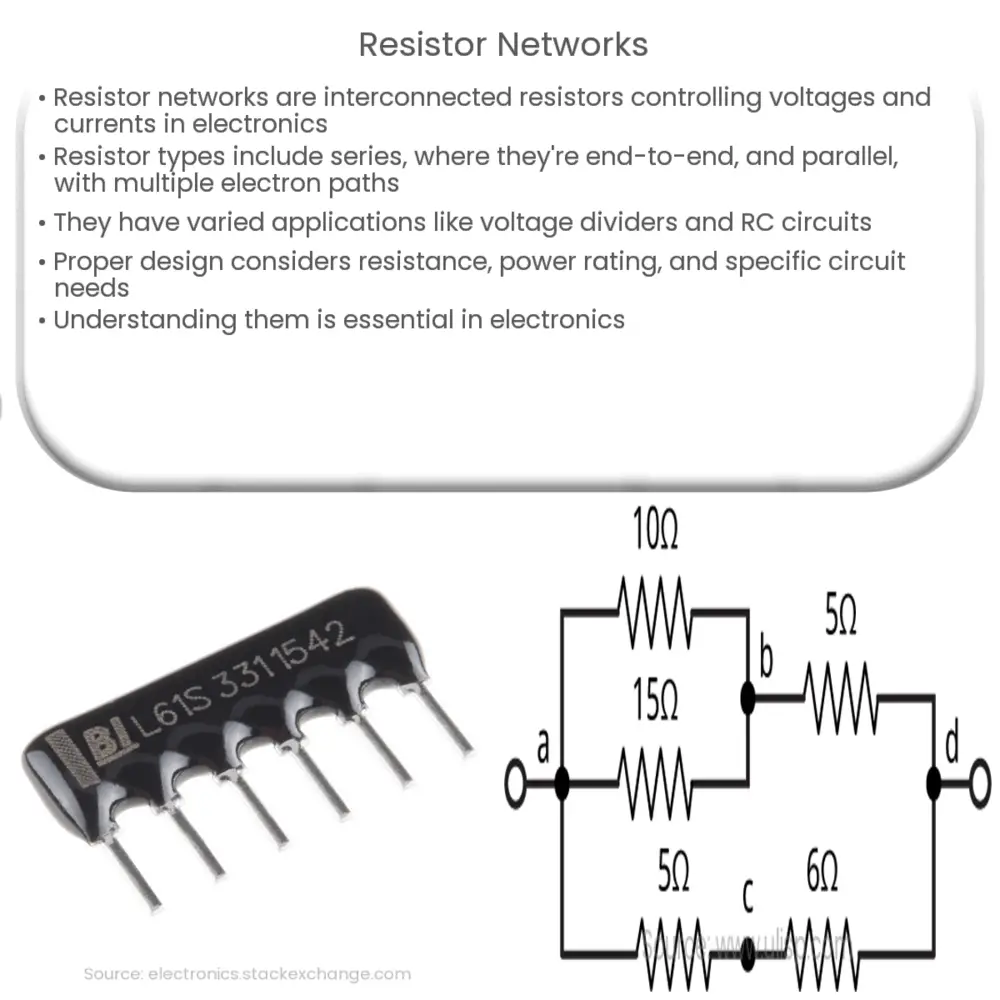Explore the basics of resistor networks, their types, design, applications, and importance in modern electronic circuitry.

Understanding Resistor Networks
A resistor network is an interconnection of resistors, arranged in a particular pattern, designed to perform a specific function within an electronic circuit. These networks are fundamental building blocks in electronic devices and are used to control voltages and currents.
The Basics of Resistors
Before diving into the complexities of resistor networks, let’s briefly revisit the concept of a resistor. A resistor is a passive electronic component that implements electrical resistance as a circuit element. In other words, resistors are used to limit the flow of electric current through a circuit. They follow Ohm’s Law, which states that the voltage across a resistor is equal to the product of the current flowing through it and its resistance.
Types of Resistor Networks
Resistor networks can be categorized based on their configuration or arrangement of resistors. There are two main types:
- Series Resistor Network: In this configuration, resistors are connected end-to-end in a line to form a single path for electrons to flow from one terminal to another. The total resistance of this network, often represented as RTOT, is simply the sum of the individual resistances.
- Parallel Resistor Network: Here, resistors are connected across each other, offering multiple paths for the electrons to flow. In this case, the reciprocal of the total resistance equals the sum of the reciprocals of the individual resistances.
Applications of Resistor Networks
Resistor networks are extensively used in electronic circuits and devices due to their wide range of applications.
- They are used in the design of voltage dividers, where they divide the input voltage into smaller voltages.
- They also play a crucial role in creating RC (Resistor-Capacitor) circuits, used in filters and timers.
- Moreover, in analog electronics, these networks are used in biasing circuits, feedback networks, and impedance matching.
The above discussion provides a brief overview of resistor networks, their types, and applications. In the following section, we will delve deeper into the practical aspects of designing and using resistor networks.
Designing Resistor Networks
When designing a resistor network, one must consider the required resistance, power rating, and tolerances of the individual resistors. Network design also heavily depends on the specific needs of the circuit or device in which the network will be implemented. For example, voltage divider circuits will necessitate different design considerations compared to impedance matching circuits.
Complex Resistor Networks
In practice, resistor networks are not always limited to series or parallel configurations. It is common to encounter combinations of series and parallel configurations in a single network, also known as mixed or complex resistor networks. In these networks, the total resistance can be calculated by simplifying the circuit step-by-step, applying the rules for series and parallel resistors as appropriate.
Resistor Network Theorems
Various theorems and laws help us analyze complex resistor networks. The most prominent among these are Kirchhoff’s Laws, Thevenin’s Theorem, and Norton’s Theorem. These principles provide valuable tools for analyzing and simplifying circuits, enabling easier calculation of total resistance, current, and voltage at any point in the circuit.
Resistor Network Packages
Resistor networks can come as standalone components, often in Dual In-line Package (DIP) or Single In-line Package (SIP) configurations. These are used when precision and matching of resistors are important, such as in analog-to-digital converters (ADCs), digital-to-analog converters (DACs), and operational amplifier circuits.
Conclusion
In conclusion, resistor networks play a vital role in electronics, aiding in controlling voltages and currents in a wide array of devices and applications. Whether in a simple series or parallel arrangement or as part of a more complex circuit, they provide the necessary tools for designing and fine-tuning electronic systems. Understanding resistor networks is therefore fundamental for anyone working with electronics. Just like the individual resistors themselves, these networks form the backbone of electronic circuitry, highlighting their importance in modern-day electronics.



